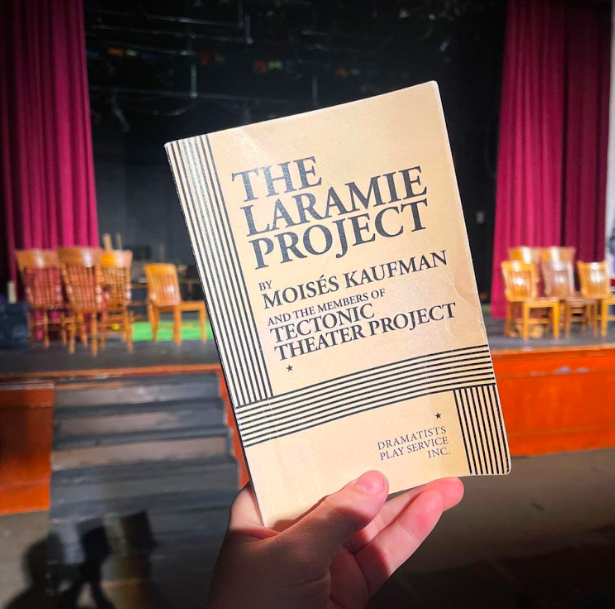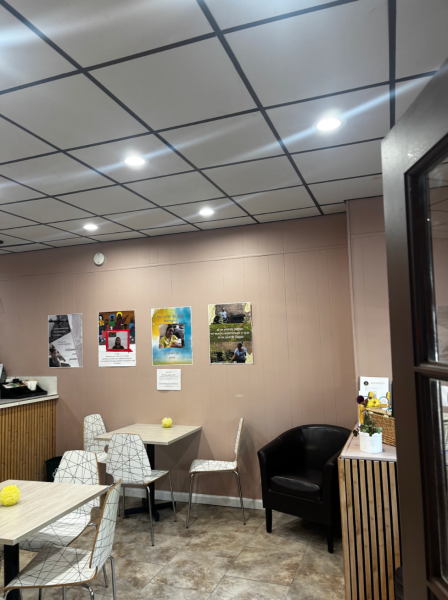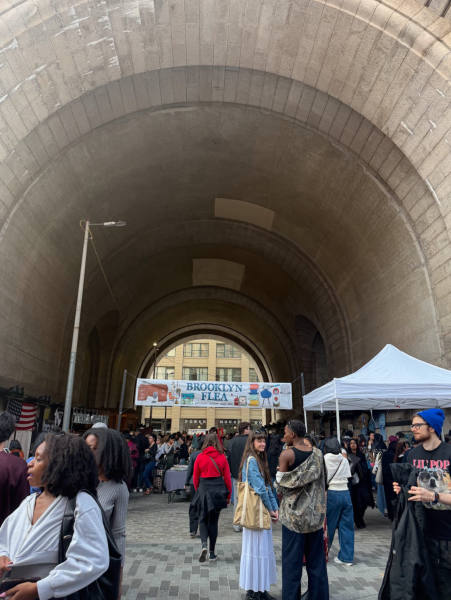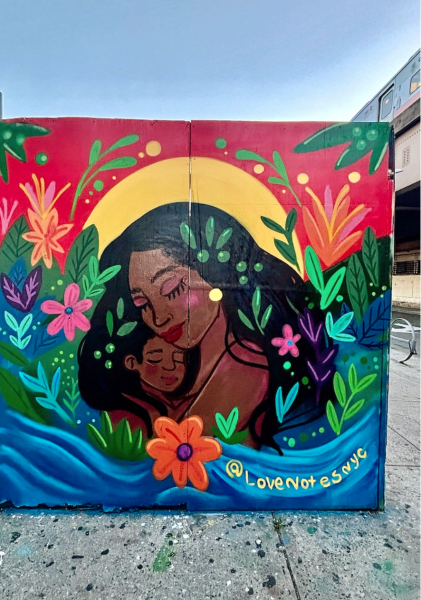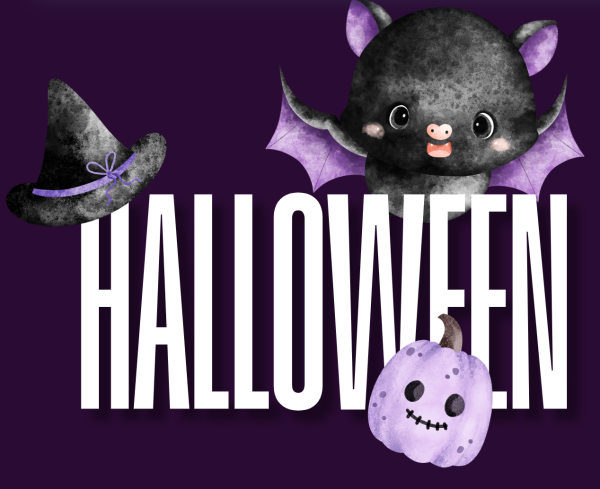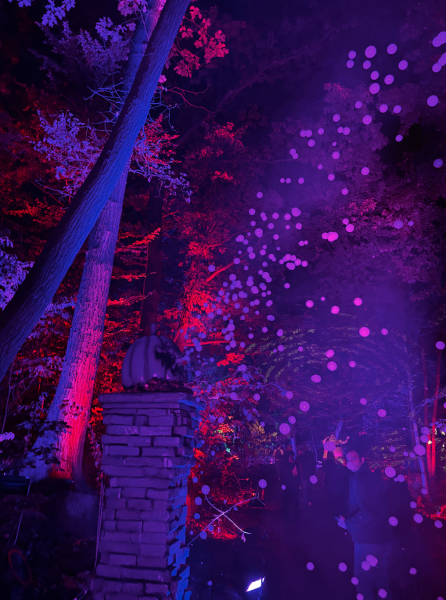The Mimes and Mummers Perform “The Laramie Project”
From March 30 to April 2, the Mimes and Mummers performed “The Laramie Project,” a 2001 play written by Moisés Kaufman in the aftermath of the Laramie murder that shook America. Set in front of the curtain, on the apron of the stage and the floor right before it, the cast of nine transformed into a multitude of people, all residents of Laramie, Wyo. They moved from chair to chair, always moving around a buck fence, putting on different costume pieces that distinguished each of their characters. The stripped back production focused their audience’s attention on their performances — on the expression of their faces, and the tones with which they spoke. Through them, audiences could see the people of Laramie and connect with all the nuanced ways that the residents made sense of their town’s horribly shocking tragedy.
Before you read further, be warned that this is a brutal story. It includes intense violence against someone on the basis of their sexuality. While this article shall avoid the more gruesome details, there will be references to the violence that inspired the play. With that warning, let us discuss the Mimes and Mummers show.
In 1998, a 21-year-old man, Matthew Shepard, was kidnapped, robbed, beaten within an inch of his life and left for dead in the middle of the Wyoming prairie. He spent 18 hours tied to a fence, enduring freezing temperatures, before he was discovered. Although Shepard was rushed to a hospital immediately, he had slipped into a coma from which he never woke up. A few days later, he died. Described by the BBC as “The Murder that Changed America,” Shepard’s story incited outrage, protest and ended in the creation of the “Matthew Shepard and James Byrd, Jr. Hate Crimes Prevention Act,” a federal law against hate crimes directed at the LGBTQ+ community.
Rather than dramatizing the gruesome story of Shephard’s death, Kaufman’s play explores the shockwaves that continued to ripple through the small town of Laramie, long after the gruesome murder had occurred and the presence of the media died down. He led a team of 10 writers from his New York City theater company, Tectonic Theater Project, to interview the residents. They wove together their 200 interviews and other material, such as courtroom transcripts, to create a piece of theater that explored the small town, its people and the foundational bigotry that enabled such a horrific event to take place.
This is an unfortunately timely performance, as the passage of laws like Florida’s infamous “Don’t Say Gay” law betray a growing trend of conservative lawmakers suppressing queer rights. As Jacob Demlow, the show’s director, wrote in his director’s note at the beginning of the program, “In an ideal situation this show would have become dated, however it’s odd that as we reach the 25th anniversary of Matthew Shepard’s death it feels just as relevant as it did when it first premiered in May of 2000.”
Demlow’s directing expressed this solemn tone, as the sparsely decorated stage, few props and little movement allowed the actor’s words to soak into the audience. The main movement that happened on the stage were the actors moving from one chair to the next, which they sat in when they were not directly addressing the audience or one of the other actors. These chairs all looked as if they had come out of an old, western home, as they were each made of wood and had beautiful detailing. At times, a handful of chairs would be brought together to form a bar, table or other set-up. In this way, then, the chairs also became characters in their own right.
And, again, looming behind the actors throughout the entire play was the buck fence, upon which Shepard had been tied for 18 hours after being beaten. Similar to the chairs, it had a certain livelihood as it cast a shadow on stage.The actors interacted with the fence a few times, as their characters returned to the site of the gruesome attack. They did this only in small groups, however. It was not until the end of the play, when each of the actors gathered around the buck fence to reflect on Shepard’s life and the hope they had for the future, that they all came together and leaned on it.
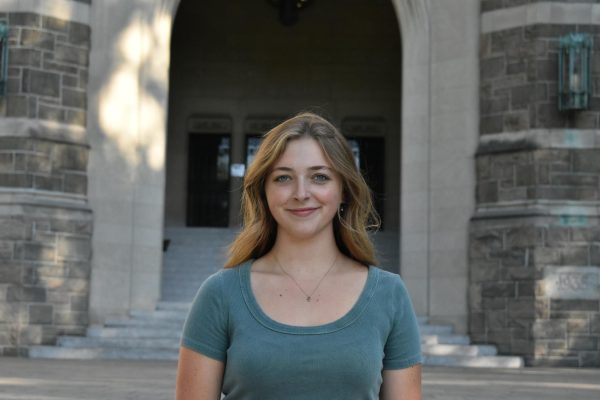
Kari White is a senior from the blink-and-you’ll-miss-it state of Delaware. She is majoring in English with a concentration in creative writing, as well...





































































































































































































